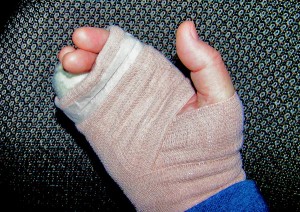
Let’s have a closer look at how they can be caused and how to avoid them in the workplace where possible.
What are hazardous manual tasks?
What a the term hazardous manual task refers to is any job that needs a person to lift, lower, pull, push, carry, hold, move or restrain a thing, animal or person.
A hazardous manual task will require at least one of the following:
- A repetitive or sustained force
- A high or sudden force
- A repetitive movement
- A sustained or awkward posture
- An exposure to vibration.
They can be a factor with musculoskeletal injuries that may well mean that a person experiences a permanent effect on their ability to work, including productivity, and their quality of life.
Some of the common musculoskeletal injuries:
- Muscle strains and sprains
- Ligament or tendon rupture
- Prolapsed intervertebral discs
- Tendonitis of the shoulders and elbows
- Carpal tunnel syndrome.
How much can be safely lifted without causing injury?
Risk is impacted by a number of factors not just the weight that is being handled so there are no weight limits specified in the relevant regulations.
What they do say is that the risks associated with a musculoskeletal disorder in relation to any hazardous manual task. Control measures need to be decided by taking into consideration all of the risks of hazardous manual tasks such as:
- The postures, movements, forces and vibration relating to the task
- The duration and regularity of the task
- Workplace environmental conditions that may affect the task or the worker performing the task
- The work area design
- The workplace layout
- The workplace systems of work
- The kind, size, weight or number of persons, animals or things involved in carrying out the task.
Is using a team to lift an appropriate control measure for manual handling?
There are risks that are also involved in using a team lift that must be considered and managed before a lift is undertaken. Issues or risks such as:
- Workers of different size, strength and experience causing an uneven lift
- Workers that do not lift at the same time
- The load being shared unequally
- An unexpected shift of balance if someone loses grip on the load
Is there best way to lift?
There is actually no best way it is always a matter of managing the risks to reduce the possibility of injury. Where possible it is ideal to use mechanical aids where possible to eliminate the need for manual lifting.
What about training worker in lifting techniques is it an efficient control measure?
Whilst all workers need to be trained in lifting techniques according to DEIR Queensland it is not considered an effective control measure simply because it relies on the behaviour of the worker.
Historically workers have been taught the straight back and bent knees method but according to research:
- Teaching workers to lift relies on human behaviour, which can fluctuate depending on the factors that are being dealt with in the workplace. Any program addressing manual tasks needs to instead look at both design and engineering controls that in fact remove the need for manual handling.
- It is not always easy to apply the straight back principle to tasks rendering it ineffective in reducing injury.
- Other tasks need to be also considered when assessing manual handling risks such as pushing and pulling.
It is ideal if training has a focus on:
- The different control measures that need to be used
- When different aids can be used and how to use them
- When issues, including maintenance problems should be reported.
What about pre existing conditions?
Always focus on the risk rather than individuals, age and a persons weight can be considered along with other risk factors. If an employer is worried that a worker may not be able to do their job what they can do is to get the worker to be assessed by an appropriate health professional.



